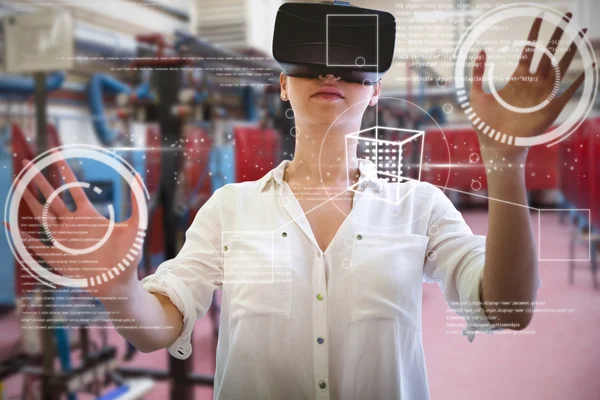Augmented Reality (AR) and Virtual Reality (VR) technologies are two of the most exciting innovations of our decade. In the past few years, both technologies have been rapidly adopted in many industries to streamline processes, reduce costs, and provide an enhanced customer experience. As a result, businesses across the globe are seeking ways to leverage these technologies to increase efficiency and profitability. In this article, we will explore how businesses can use AR and VR technologies to their advantage.
What Is The Use Of Virtual And Augmented Reality VR And AR?
Virtual and augmented reality (VR and AR) are used to create immersive experiences that enhance our perception of the real world. VR creates a completely new, simulated environment that users can interact with, while AR enhances the real world by overlaying digital information on top of it.
VR and AR have many practical applications, including in education and training. For example, medical students can use VR to practice surgeries in a safe, simulated environment, while employees can use AR to receive real-time instructions while performing tasks.
In the field of marketing, VR and AR can be used to create engaging, interactive experiences for customers. Brands can build online showrooms or storefronts that let people engage with products and make wise purchases.
Learning SMO in Delhi can include modules on using VR and AR for marketing purposes, as these technologies are becoming increasingly important in the industry. Brands that incorporate VR and AR into their marketing strategies can differentiate themselves from competitors and create memorable experiences for customers.
How Are Augmented And Virtual Reality Being Used In Business?
Businesses are constantly seeking new ways to engage with customers and enhance their brand experiences. Augmented Reality (AR) and Virtual Reality (VR) have emerged as popular technologies that businesses are using to achieve these goals. AR is a technology that superimposes computer-generated images onto the real world, while VR is an immersive experience that transports users into a completely virtual environment.
One way businesses are incorporating AR into their marketing strategies is through interactive product demonstrations. Customers can use their smartphones or tablets to scan an image of a product and see it in 3D, allowing them to visualize the product in real-world scenarios. This increases customer engagement and helps them make more informed purchasing decisions.
Why Augmented Reality And Virtual Reality Are Important?
Augmented Reality and Virtual Reality have become buzzwords in the tech industry and for good reason. These technologies are fundamentally changing how we interact with the world around us. Augmented Reality (AR) is a technology that overlays digital information onto the physical environment, while Virtual Reality (VR) immerses users in a simulated environment. Both of these technologies offer unique benefits and applications which are becoming increasingly important across various industries.
One of the biggest advantages of AR and VR is their ability to enhance user experiences. For example, AR can be used to provide customers with interactive product demonstrations or create immersive gaming experiences. VR can be used for training purposes, such as simulating dangerous situations or teaching new skills virtually without risk or injury. These technologies can also be useful for architects and engineers by allowing them to visualize their designs in 3D before construction begins.
How Can Augmented Reality AR and Virtual Reality VR Be Used To Make It Successful?
Augmented Reality (AR) and Virtual Reality (VR) are two technologies that have been making waves in the business world for some time now. AR is a technology that overlays digital information onto real-world objects, while VR creates a simulated environment. These technologies can help businesses to reach their target audience in new ways and enhance customer experiences. In this article, we will explore how businesses can use AR and VR to create successful marketing campaigns.
One of the ways that businesses can utilize AR is by creating interactive product demos. With AR technology, companies can showcase their products in a more engaging way than traditional methods such as product catalogs or videos. For example, an automotive company could create an augmented reality app that allows customers to view different car models from every angle and change colors or add features before purchasing. This type of interactive experience not only provides customers with valuable information but also increases engagement with the brand.
Conclusion
In conclusion, the current state of technology is paving the way for businesses to take advantage of Augmented Reality (AR) and Virtual Reality (VR) technologies. With increased accessibility, affordability, and scalability of these technologies, organizations can create a more immersive experience for their customers while also saving time and money. Businesses need to be aware that AR and VR are not trends; they are here to stay.














